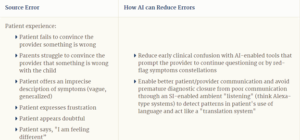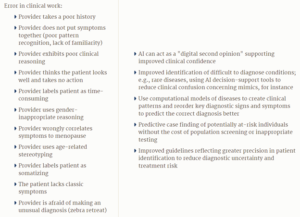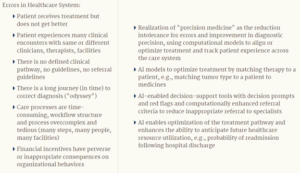Makary and Daniel (2016) identify a medical error as “an unintended act or one that does not achieve its intended outcome, the failure of a planned action to be completed as intended, the use of a wrong plan to achieve an aim, or a deviation from the process of care that may or may not cause harm to the patient.”
Medical errors increase expenses in additional patient care and possible litigation costs. Serious medical errors are devastating to the patient, family, and staff. The severe consequences of medical errors are one reason that healthcare is a highly regulated business. All healthcare organizations must be licensed. They also must meet industry standards, building and safety codes, and federal and state statutes.
Healthcare organizations are subject to inspection for compliance with statutes, regulations, and industry standards. Inspections can be scheduled or unscheduled. Scheduled inspections are conducted periodically. Unscheduled inspections can be conducted randomly or conducted for cause, like a patient complaint. One of the most well-known inspection agencies for hospitals is the Joint Commission (TJC). It is an independent organization, meaning that TJC is neither a government agency nor a financial interest in any healthcare organization. If a healthcare organization meets industry standards, TJC accredits that organization for a certain time.
Over the last twenty years, medical errors continue to be a major cause of death in the US. Error reporting is low. When errors are reported, corrective actions are not taken (Anderson & Abrahamson, 2017).
Barriers to reducing medical errors are (Anderson & Abrahamson, 2017):
• Information technology to reduce errors is expensive
• Healthcare reimbursement does not incentivize facilities and practitioners to invest in patient safety
Use of artificial intelligence (AI) to reduce errors (Tremblay, 2020 P 27)



Curriculum
- 1 Section
- 31 Lessons
- 10 Weeks
- Start course32
- 1.1Competency
- 1.2Performance Improvement (PI)
- 1.3High Reliability
- 1.4Quality Control
- 1.5Risk Management
- 1.6Sentinel Events
- 1.7Root Cause Analysis
- 1.8Human Error
- 1.9Human Factors Engineering
- 1.10The Cognitive Process
- 1.11Impact of Design
- 1.12Interactions with Others
- 1.13Applying Human Factors Science to Healthcare
- 1.14Psychological Human Factors
- 1.15Disruptive Behavior
- 1.16Medical Record Documentation
- 1.17Medication Errors
- 1.18High-Alert Medications
- 1.19Drug Specific Strategies for the Prevention of Medication Errors
- 1.20Anticoagulants
- 1.21Pediatric Medications
- 1.22Use Technology Judiciously
- 1.23Infusion Pump Errors
- 1.24Medication Reconciliation
- 1.25Tubing Misconnection
- 1.26Technology
- 1.27Medical Device Alarm Safety
- 1.28National Patient Safety Goals
- 1.29Case Scenario
- 1.30Conclusion
- 1.31References
- 1.32QUESTIONS AND ANSWERS10 Minutes10 Questions





